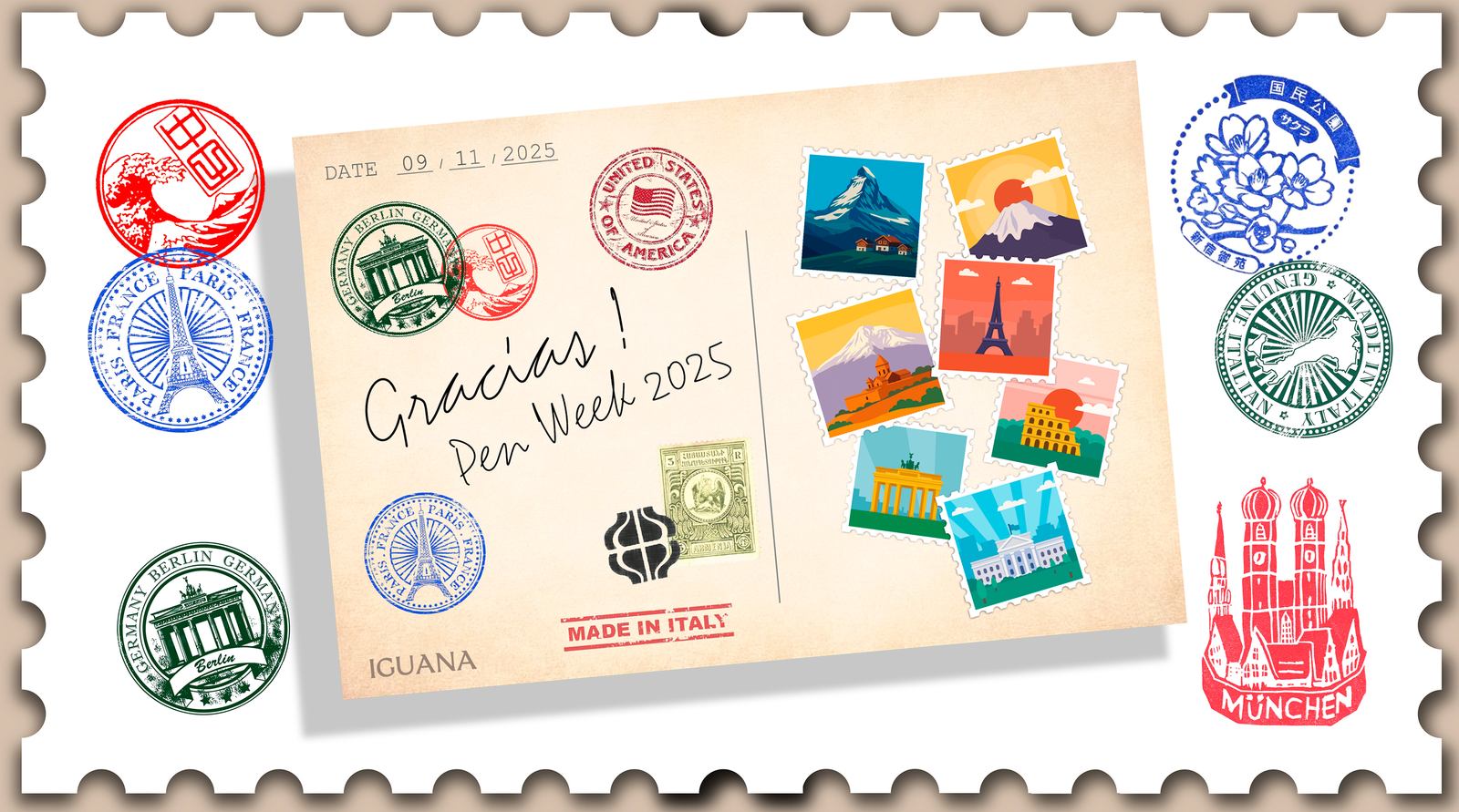Pens
Accessories
Japanese or European nib?
April 09, 2021 3 min read

Japanese or European fountain pens?
In a fountain pen that aspires to excellence, all the materials have to be excellent: the body, the clip, the cap, the charging system, the projections, the case... But if there is one element that makes the difference, that is the nib.
The point or measure is perhaps the characteristic that will most affect the type of writing. It refers to the width of the nib, which determines the width of the stroke it provides.
Which nib point to choose will depend on its intended use and personal preference. The smallest ones are indicated for daily use and for amateurs with small print, while the larger dots create a wider and abundant line of ink, which allows you to better enjoy certain qualities of the ink by appreciating a certain variation in its flow in the strokes. Obviously the resulting letter, for its correct definition, is larger.
In the following picture, you can see the differences between a Platinum Ulta-Extra-fine nib and a Platinum Music nib.

As a general rule, and with reference to nibs from European and Japanese manufacturers, nibs made in Asia will have a finer writing point than analog nibs made in Europe.
For practical purposes, what is the difference between Japanese and European nibs?
Notably, there are two main countries in the manufacture of fountain pens: Germany and Japan. In Japan, the most famous brands when it comes to making nibs are Pilot, Platinum and Sailor. Precisely, their in-house or internal production distinguishes them from other brands. As you know, the nibs used by the famous Namiki brand are manufactured by Pilot; and in Sailor's case, some of her nibs are used by Taccia. Another curious fact is that Nakaya has hired retired Platinum artisans to produce its nibs.

14K- gold nibs of Platinum, Pilot and Sailor
In general, the sizes in which the difference is more pronounced are EF and F, where for the same point, the result of an Asian nib is much finer. Nibs M and B are usually the same size.
In the following picture, we can see the difference between a European nib (Montegrappa) and a Japanese nib (Nakaya).

Why are the Japanese tips thinner?
The complexity of the Japanese kanji characters requires precision instruments. Medium or thick points are totally unsuitable for blurring details.
In this way, we could not conceive a Japanese fountain pen without the influence of the art of calligraphy, drawing and, above all, swordplay. The long tradition of the land of the rising sun in these arts has allowed refining manual techniques to achieve fountain pens of magnificent beauty and precise nibs.

In the picture, the fountain pens: Pilot Custom 845 and Sailor 1911
European fountain pen
In Europe there are several companies that manufacture nibs, but Germany is the main producer country. LAMY and Pelikan are German brands that manufacture their own nibs in house. As well as Aurora and Visconti produce its own nibs in their Italian headquarters.
Likewise, there are important producers of nibs in Germany that do not work for a single brand. This is the case with Bock and JoWo. Bock manufactures for Caran d'Ache, Kaweco, Faber Castell, etc. The second company provides nibs for Esterbrook and Conklin, among others.
Knowing these aspects will undoubtedly help you choose your next fountain pen.

From left to right: Conklin All America and Esterbrook Estie Cobalt
If you require more information or if you would like to place an order, please do not hesitate to contact us or visit our store in Madrid, at Nuñez de Balboa 90.
We will be pleased to help you.
Also in News

The art of writing: a journey that never ends – Day 7 of Iguana Pen Week
November 04, 2025 2 min read
Read More
United States & Armenia: Innovation and Art in Motion – Day 6 of Iguana Pen Week
November 04, 2025 4 min read
Read More
Germany: precision and functional design in every pen – Day 5 Iguana Pen Week
November 04, 2025 3 min read
Read More
Menu Title
This section doesn’t currently include any content. Add content to this section using the sidebar.
Recent Articles
- The art of writing: a journey that never ends – Day 7 of Iguana Pen Week
- United States & Armenia: Innovation and Art in Motion – Day 6 of Iguana Pen Week
- Germany: precision and functional design in every pen – Day 5 Iguana Pen Week
- France & Switzerland: Elegance and Precision in the Art of Writing – Day 4 Iguana Pen Week 2025
- Japan: Writing as an Art – Day 3 Iguana Pen Week
- Italy: Passion and Style in Every Stroke – Day 2 Iguana Pen Week 2025
- The journey of writing begins here – Day 1 Iguana Pen Week 2025
- Esterbrook x Peanuts, a lifelong friendship
- Timex x Peanuts: the watches that stole the world’s heart
- How to keep your Pilot Capless looking like new
Subscribe
Sign up to get the latest on sales, new releases and more …
50,000+ Satisfied Customers Our dedicated advisors are available Monday to Saturday, online and by phone.
60+ Official Brands Official warranty, original packaging, and signed warranty documentation included.
15+ Years of Experience Specialists in writing instruments, watches, and premium accessories.
100% Secure Payment Interest-free payment options available and all transactions are fully encrypted.
